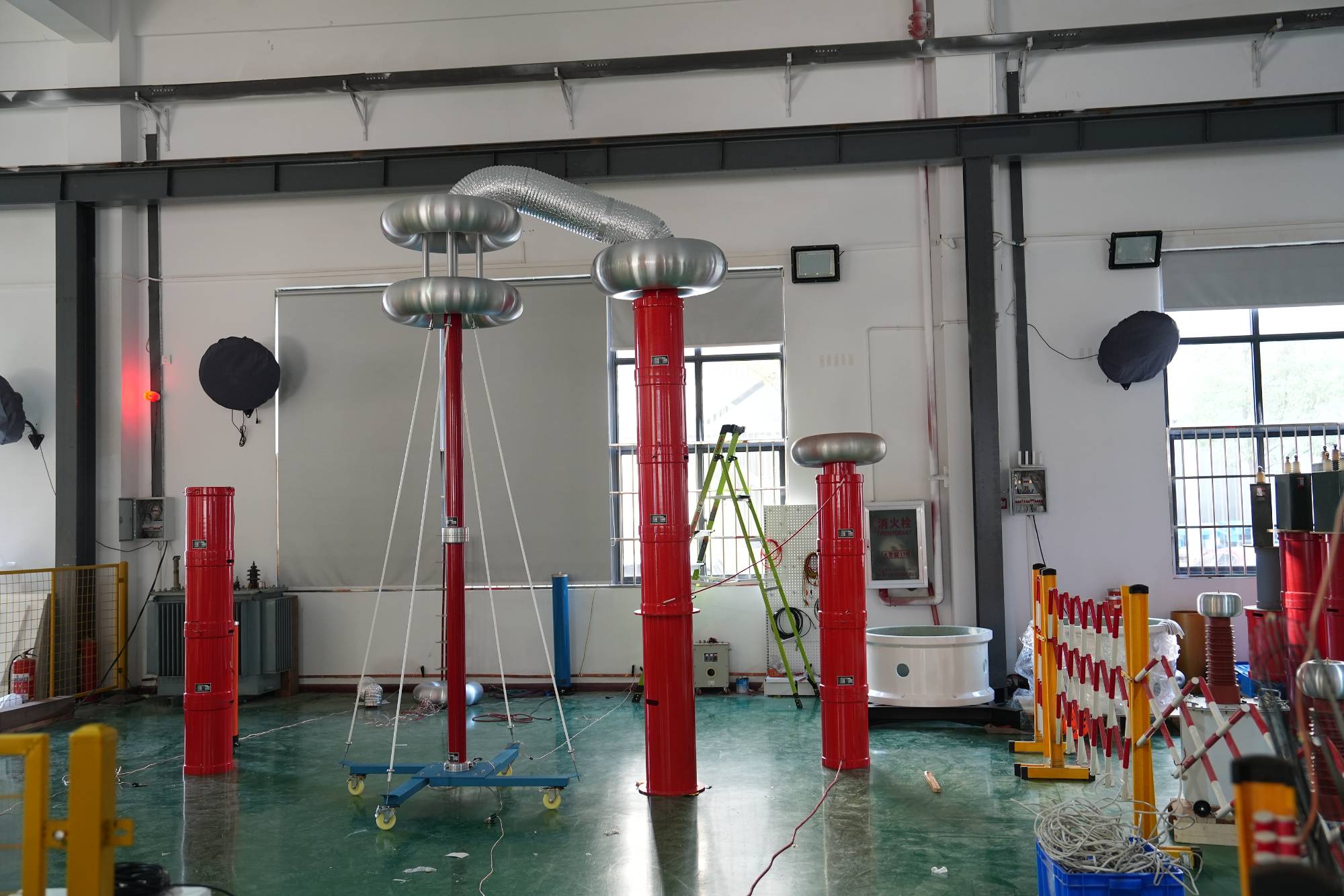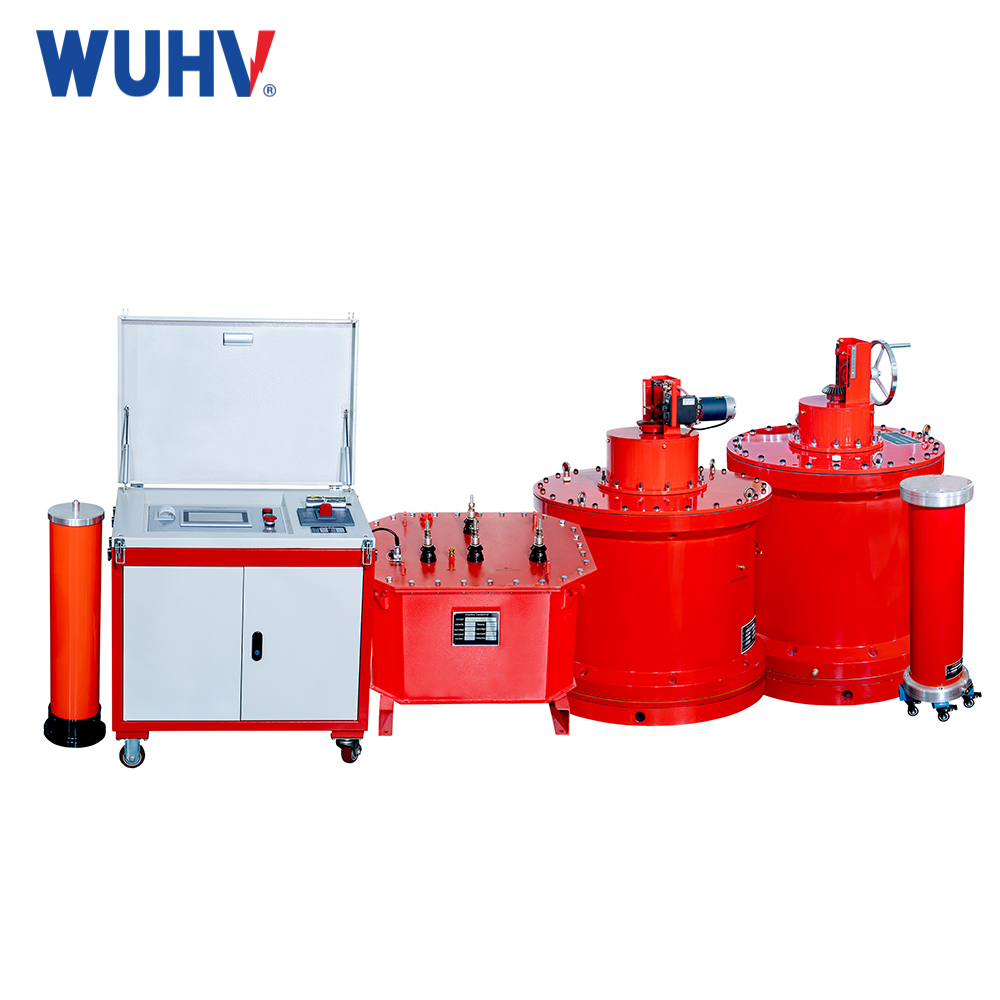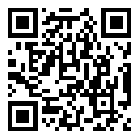Series resonance (also known as variable frequency series resonance test device) regulates the output voltage of the variable frequency controller
الvariable frequency series resonance test device applies the principle of series parallel resonance. By adjusting the output frequency of the variable frequency controller, the inductance L of the reactor in the circuit and the capacitance C of the test sample resonate, and the resonant voltage is the voltage applied to the test sample. Through the development of a system frequency controller, a power supply is provided. The voltage is initially boosted by an excitation transformer (pressure controlled variable) and applied to the reactor L and the test sample CX. By continuously changing the output frequency of the traditional frequency controller to different frequencies, the circuit is in a series resonant network state; The resonant frequency of the circuit mainly depends on the capacitance CX of the test sample and the inductance L of the reactor. Adjust the output current and voltage of the variable frequency controller to achieve the required voltage value in the high-voltage environment on the test sample.
The frequency conversion series resonance test device has a small volume and light weight, making it suitable for on-site use
The frequency conversion controller integrates voltage regulation, frequency modulation, control, and protection functions, eliminating the need for bulky voltage regulators. It is also easy to operate and has intuitive readings. Due to the high Q-value (30-120) of the system, it effectively addresses the constraints caused by insufficient power capacity in on-site testing. When the voltage level requirements are high, the reactor adopts a multi-stage or stacked structure, which is convenient for students to use and install on-site equipment.
The installation reliability of the frequency conversion series resonance test device is high
The variable frequency (VFD) device adopts advanced design concepts, high-quality (character) IGBTs and drive circuits, which result in small waveform distortion, stable frequency (frequency) output (note: stable and stable; no change), and good IGBT, overcurrent (electronic current), overvoltage (protection value can be manually set according to needs) and discharge protection functions, which can protect the safety of equipment and personnel!! Due to the discharge or rupture of the test sample and the destruction of resonance conditions, the short-circuit (current is not electrical, directly connected to the two poles of the power supply) current is very small, and the test current of the test sample is only 1/Q, avoiding damage to the test sample caused by breakdown.
The frequency conversion series resonance test device has good equivalence in testing
When the AC voltage is close to the frequency (30HZ-300HZ) as the test power, whether the power is equivalent and consistent at the frequency of 50HZ/60HA is very close, and the reliability of the actual test results is guaranteed.




















